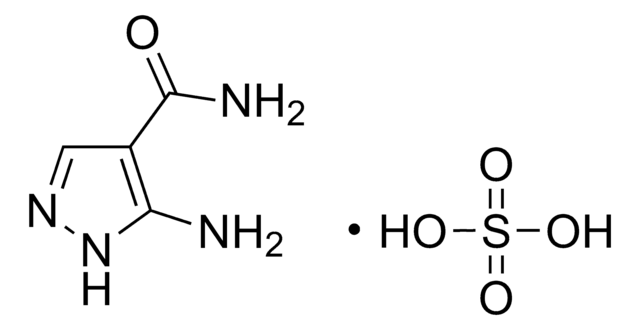MABF917
Anti-CRACC Antibody, clone 4G2
clone 4G2, from rat
Synonyme(s) :
SLAM family member 7, CD2-like receptor-activating cytotoxic cells, CRACC, Leukocyte cell-surface antigen, Novel Ly9, CD319
About This Item
Produits recommandés
Source biologique
rat
Niveau de qualité
Forme d'anticorps
purified antibody
Type de produit anticorps
primary antibodies
Clone
4G2, monoclonal
Espèces réactives
mouse
Technique(s)
flow cytometry: suitable
immunoprecipitation (IP): suitable
Isotype
IgG1κ
Numéro d'accès NCBI
Numéro d'accès UniProt
Modification post-traductionnelle de la cible
unmodified
Informations sur le gène
mouse ... Slamf7 (75345)
Description générale
Spécificité
Immunogène
Application
Flow Cytometry Analysis: A representative lot detected CRACC expression on the surface of many types of mouse immune system cells, including NK cells, NKT cells, B cells, DCs, macrophages and activated T cells (Cruz-Munoz, M.E., et al. (2009). Nat. Immunol. 10(3):297-305).
Affects Function: A representative lot, in combination with a rabbit anti-rat IgG, cross-linked cell surface CRACC and induced similar CRACC phosphorylation in IL-2-activated NK cells from wild-type, SAP-deficient, or EAT-2–ERT–double knock (DKO) mice (Cruz-Munoz, M.E., et al. (2009). Nat. Immunol. 10(3):297-305).
Immunoprecipitation Analysis: A representative lot, in combination with a rabbit anti-rat IgG and protein A, immunoprecipitated CRACC from lysates of IL-2-activated mouse NK cells (Cruz-Munoz, M.E., et al. (2009). Nat. Immunol. 10(3):297-305).
Inflammation & Immunology
Immunological Signaling
Qualité
Flow Cytometry Analysis: 0.1 µg of this antibody detected CRACC-positive mouse splenocytes.
Description de la cible
Forme physique
Stockage et stabilité
Handling Recommendations: Upon receipt and prior to removing the cap, centrifuge the vial and gently mix the solution. Aliquot into microcentrifuge tubes and store at -20°C. Avoid repeated freeze/thaw cycles, which may damage IgG and affect product performance.
Autres remarques
Clause de non-responsabilité
Vous ne trouvez pas le bon produit ?
Essayez notre Outil de sélection de produits.
Code de la classe de stockage
12 - Non Combustible Liquids
Classe de danger pour l'eau (WGK)
WGK 2
Point d'éclair (°F)
Not applicable
Point d'éclair (°C)
Not applicable
Certificats d'analyse (COA)
Recherchez un Certificats d'analyse (COA) en saisissant le numéro de lot du produit. Les numéros de lot figurent sur l'étiquette du produit après les mots "Lot" ou "Batch".
Déjà en possession de ce produit ?
Retrouvez la documentation relative aux produits que vous avez récemment achetés dans la Bibliothèque de documents.
Notre équipe de scientifiques dispose d'une expérience dans tous les secteurs de la recherche, notamment en sciences de la vie, science des matériaux, synthèse chimique, chromatographie, analyse et dans de nombreux autres domaines..
Contacter notre Service technique![(2S)-6-Amino-2-{[(9H-fluoren-9-ylmethoxy)carbonyl]amino}hexanoic acid](/deepweb/assets/sigmaaldrich/product/structures/208/694/eddf6778-ca06-4285-b640-a693f1ce3eda/640/eddf6778-ca06-4285-b640-a693f1ce3eda.png)
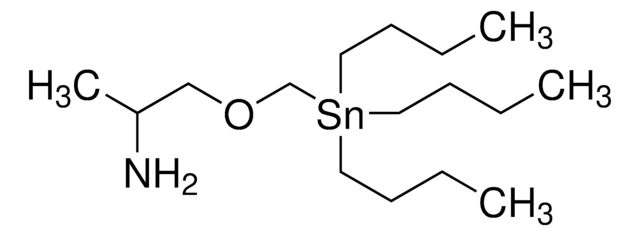
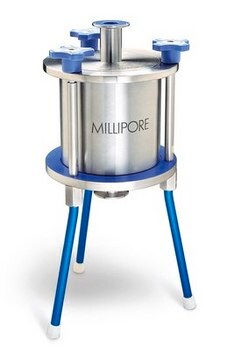
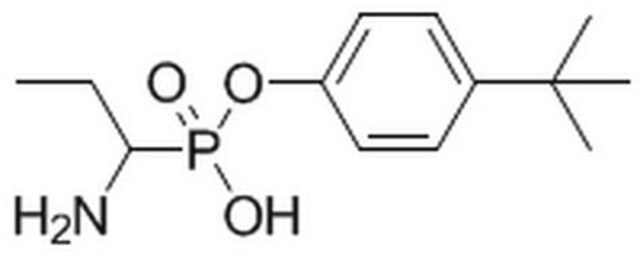

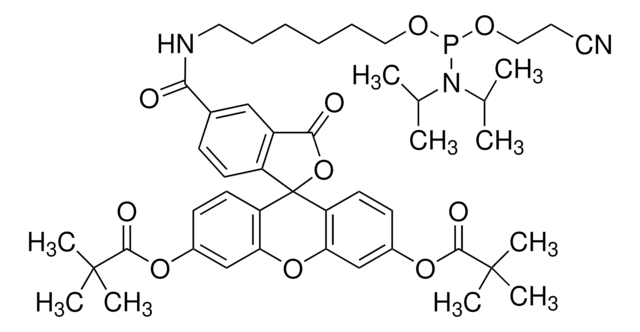
![1,3,8-triazaspiro[4.5]decane-2,4-dione AldrichCPR](/deepweb/assets/sigmaaldrich/product/structures/154/012/bf434fcc-95bc-4f79-8d16-67d62a49013a/640/bf434fcc-95bc-4f79-8d16-67d62a49013a.png)


